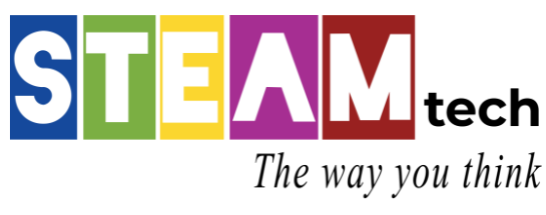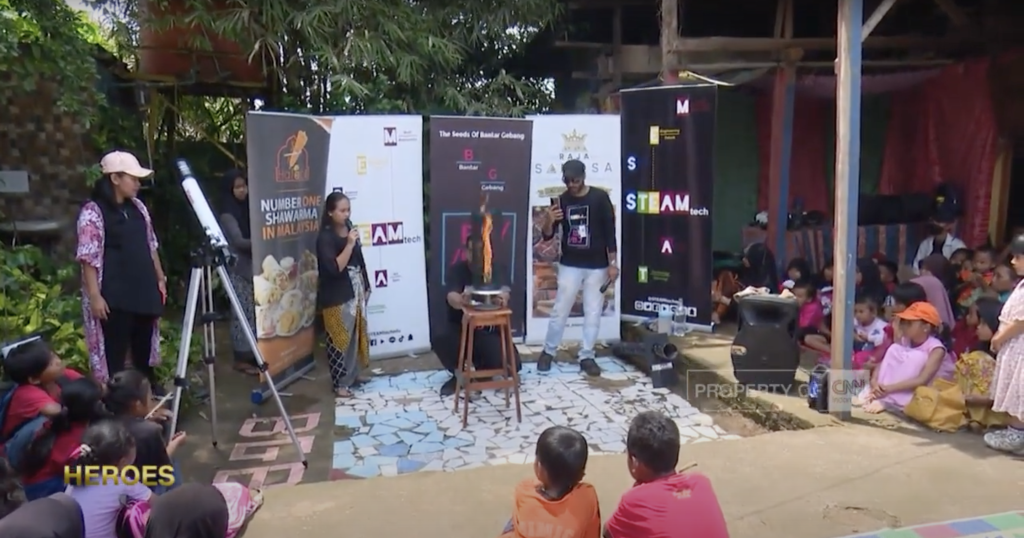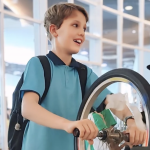In today’s rapidly evolving world, education systems are shifting to better equip students with the skills needed for the challenges of tomorrow. One innovative approach to education is STEAM, an interdisciplinary model that blends Science, Technology, Engineering, the Arts, and Mathematics. This approach is designed not only to teach students about these fields but also to foster creativity and critical thinking, key components for solving real-world problems.
Understanding STEAM Education
STEAM education works by encouraging students to think critically and solve problems in dynamic ways. Instead of simply absorbing information, students learn how to experiment, question assumptions, and creatively find solutions to complex issues. STEAM focuses on the process as much as the outcome, allowing students to explore various approaches to problem-solving while learning how to effectively use both tested solutions and innovative methods.
In the context of schools, STEAM education provides students with the tools to develop critical thinking, which is essential in today’s fast-paced society. With new problems emerging daily, it’s crucial for young people to be able to approach challenges with an open mind and the ability to think critically. This type of learning is particularly important as it nurtures qualities such as perseverance, innovation, and adaptability—skills that are vital for future success.
How STEAM Education Can Help Children to Be Creative and Critical
STEAM education goes beyond just imparting facts; it focuses on nurturing curiosity and sparking imagination. By encouraging students to ask questions and experiment, STEAM allows them to channel their creativity into productive avenues. It is in this environment that children learn how to combine their technical knowledge with artistic expression, helping them develop a well-rounded skill set.
In particular, STEAM education can help children to be creative and critical by engaging them in real-world applications of their learning. Through hands-on projects, students are challenged to think critically about how their work can make a difference. This experiential learning process encourages them to test their ideas and refine their solutions, fostering a deeper understanding of the subject matter while developing their problem-solving abilities.
Who Benefits from STEAM Education?
One of the most significant benefits of STEAM education is its ability to bridge gaps in traditionally underrepresented groups in math and science fields. By encouraging both girls and boys from diverse backgrounds to engage in these subjects, STEAM fosters a more inclusive environment. This approach helps eliminate stereotypes about who can excel in STEM fields and supports the idea that creativity and innovation are not limited by gender, ethnicity, or socioeconomic status.
In addition, STEAM education breaks away from the traditional, lecture-based teaching methods that can be disengaging for students. Instead, it creates a more dynamic learning environment where students are actively involved in the learning process, making it more enjoyable and relatable. By integrating art and creativity into technical subjects, STEAM makes learning feel more relevant and exciting.
The Growing Importance of STEAM
The global job market is changing rapidly, and the demand for professionals skilled in STEAM fields is increasing at an impressive rate. According to industry reports, the number of STEAM-related jobs is projected to grow by 14% over the next decade, outpacing other sectors by a significant margin. This demand highlights the importance of preparing today’s students for the jobs of the future, especially as industries continue to rely on innovation and technology.
The challenge for educators, however, is to make STEAM education accessible and engaging for all students. By incorporating hands-on, interactive projects, teachers can help students understand that STEAM is not just another academic subject, but a vital part of their future career prospects. Schools are increasingly introducing STEAM programs to help students grasp the relevance of these subjects, ensuring that they are not only educated but also motivated to explore and excel in them.
Real-World Applications of STEAM Education
It’s not enough for children to learn the theoretical aspects of STEAM subjects; they also need to see the real-world implications of their learning. Programs that offer practical, real-world applications of STEAM help children understand how their knowledge can contribute to society. Activities that show the impact of science, technology, engineering, arts, and mathematics in solving global issues can inspire students and make the learning experience more meaningful.
For example, STEAM-focused organizations like STEAMtech offer enrichment programs that provide children with hands-on experiences in various fields. These programs show students that learning about STEAM topics is not only important but also enjoyable and rewarding. By participating in these activities, children can see how their learning is interconnected with the world around them, giving them a sense of purpose and motivation to continue exploring these subjects.
Conclusion
STEAM education is transforming the way students approach learning, offering them the opportunity to become creative problem-solvers and critical thinkers. By combining science, technology, engineering, arts, and mathematics, STEAM prepares students for a future that demands innovation, adaptability, and collaboration. As the world continues to face new challenges, STEAM education can help children to be creative and critical, ensuring they are equipped with the skills needed to drive progress and contribute to a brighter future for all.
Motivators of the idea of STEAMtech
- Improving the economic level of the owners of the project
- Excellence and access to the forefront in STEAM Society
- Provide the best quality of the program according to the students and achieve their satisfaction on STEAM
- Obtain the largest market share
- Meeting the needs of students
- Facilitate program access by providing it in all schools and events
- Generating and providing greater value to students and schools by offering them alternative programs and services
- Provide a high percentage of manpower
Purpose of the STEAMtech
Vision & Mission:
STEAMtech was envisioned to introduce the basic concepts of Science, Technology, Engineering, Art and Mathematics at the school level. Their aim was to spike students’ interest in Science and Technology. STEAMtech installs Mini Science Centres and designs models to make learning more practical, fun, loving and easy to understand for students. It gives them proactive experience with the actual scientific models that they learn about from their textbooks.
Mission Statement:
To enhance students’ aptitude towards science & math so that they embrace it and grow with it while relishing the learning procedure.
Vision Statement:
To be globally recognized for introducing innovative learning products at the school level and contributing to society by making education easier for lesser privileged students.
Goal:
Making learning accessible to all children for aptitude enhancement. To ensure that the students have access to equal opportunities.
Immediate Goal:
Reaching out to a all students in Jakarta, Indonesia
Specific Objectives:
To ignite scientific interest in children so that:
– they develop an aptitude.
–difficult subjects like Science & Math are made simpler and fun.
–discovery and learning become a regular process.
–they get clarity on scientific knowledge for day-to-day understanding.
All of these are expected to strengthen scientific temper in children, thus laying the foundation for a flourishing career in Science & Math.
Strategic Areas of Focus:
– Providing quality teaching aids to improve teaching methods for students from lesser privileged sections of society.
– Enhancing a positive attitude, learning capacity, and skills of students; enabling them to grasp Science and Math in a more effective and interesting way.
– Providing a platform where students and teachers can volunteer for customized engagement programs/events.
– Creating partnerships and collaborating with various stakeholders to ensure sustainability of the project.
Programs Objectives:
STEAMtech envisions high-quality, culturally relevant STEAM learning experiences for every child and young person. In STEAMtech, students have access to and possess a sense of belonging in STEAM and lifelong learning pathways that extend across formal and informal education settings, including kindergarten, Primary schools, Secondary schools, Special needs schools, science centres, and other STEM institutions. STEAMtech includes six interconnected components:
• Engaged students in hands-on experiment and demonstration
• Accessible learning activities that invite intentional play and risk
• Educational experiences that include interdisciplinary approaches to solving “grand challenges”
• Flexible and inclusive learning spaces supported by innovative technologies
• Innovative and accessible measures of learning
• Societal and cultural images and environments that promote diversity and opportunity in STEAM In the process of identifying the key components of STEAMtech, the contributors to this project grappled with the issue of how the vision could be equitably implemented across the diversity of STEAM communities that exist in the world.
STEAMtech Education can provide more interesting, interactive and innovative STEAM learning programs for your kids, your school, your teachers even parents!
For more information contact our social media at @STEAMtechedu
__
STEAMtech Education®
The way you think
📍 : Ruko Saraswati Sembilan A, Jl. Saraswati, Padurenan, Mustika Jaya, Bekasi, West Java 17151
📱 : +62 852-1803-5757
📧 : steamtechedumarketing@gmail.com
🌐 : www.steamtechedu.com


